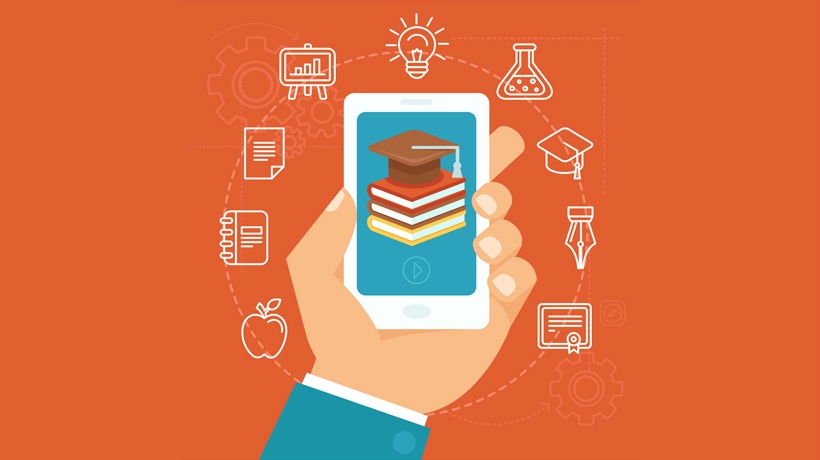Understanding Mobile Learning From The Learner’s Perspective
I’m going to start this article with a few truisms:
- The world is witnessing the rise and rise of smartphones.
- The percentage of people in the workforce who don’t own or use a smartphone is miniscule.
- People expect to use their phones for multiple purposes, and not just for making calls.
- With the onslaught of devices and mobile apps, attention (that of the users of these devices) has become a highly scarce resource.
Tired and overused clichés these might be, but they make an important point. Especially for those of us who design learning for an intelligent, smart, and mobile workforce. This workforce does not just demand sophisticated interactions and answers at their fingertips, but it takes them for granted. This group [of users / learners] is always curious, keeps constantly on the watch for fresh content and visuals, and rejects anything that it doesn’t see as useful or interesting.
And trust me, this has nothing to do with a misplaced sense of entitlement or dwindling attention spans, as some would point out. Put this same group of people in front of an interesting challenge, and they might be focus personified. Draw their attention to a well-made game, and they would probably spend hours trying to figure out the best strategies to win. Show them a good movie, and you might find them engrossed for its entire length.
So when people don’t turn up to a mobile learning course, the issue is not the users’ lack of focus or attention, it is often the material itself. It is either poorly designed, or not relevant or meaningful to the user.
Mobile Learning From The Learner's Perspective: How People Spend Time On Their Mobile Devices?
To understand how people tend to spend time on their mobile devices, here is a list of the most downloaded free iPhone apps of 2016, according to Apple:
- Snapchat.
- Messenger.
- Pokémon GO.
- Instagram.
- Facebook.
- YouTube.
- Google Maps.
- Pandora.
- Netflix.
- Spotify Music
At first glance, it may seem that none of these apps have anything to do with learning. But take a closer look, and we would find that many of them are closely linked to learning. Take Snapchat for instance. It’s easy to dismiss it as a tool for goofy teen updates, but a growing number of people have admitted to using it for learning and for building meaningful connections at a professional level.
Another example is YouTube, the top site for procrastination via funny cat videos, but some studies say that product videos and how-to videos are two of the most watched categories on YouTube.
And then there is Google Maps. It’s again difficult to associate this with any kind of learning, but think a little, and we will notice that it is nothing but performance support at work.
The point I’m trying to make is that out of the 10 most downloaded apps of 2016, 3 have to do with learning. But not in the way we’re used to thinking about learning. When we think of mobile learning, we tend to do so in very traditional terms – we imagine a course that contains an introduction, followed by activities and explanation, and then by a conclusion.
Jane Bozarth sums this up beautifully in a 2016 blog post, where she says “we [learning professionals] tend to think about ‘Learning’ with a capital ‘L’, as some rather abstracted high-minded pursuit”, whereas “the rest of the world thinks about ‘learning’ as ‘solving a problem’ or ‘getting an answer’ or ‘figuring it out’ or ‘looking it up’”.
And that’s exactly what these apps are about. They help people solve problems or find answers when they need them the most. If that is not learning, then what is?
Coming to the more traditional ‘learning’ applications, here are two of my most favorite apps for learning - Duolingo and Elevate.
While Duolingo is purely focused on learning a new language from the ground up, Elevate is about building and improving skills in a variety of areas related to Math, Reading, Writing, Speaking and Listening. Both apps take advantage of the principles of gamification, mobile learning, micro learning and spaced repetition, and deliver learning experiences that are delightful in their own right.
5 Tips To Create Engaging Mobile Learning From The Learner's Perspective
What can we learn from these apps, and the ones above, to make sure the ‘learning’ that we send people’s way stays relevant and meaningful for them? Here are a few thoughts:
- Short and to-the-point.
Each session typically addresses one targeted topic. No long-winded intros, no ‘learning objectives’, no fluff. And how short? I don’t want to put a number to this, but I can say that anything which doesn’t address the main topic should be culled. - Useful, relevant, and timely.
People consume learning that they see as immediately useful and relevant to them. To understand this, just look at some of the how-to videos on YouTube. Many of them are poorly produced, with below average video and audio quality, bad lighting, etc., but you would see that they have garnered thousands of views, which goes to show that when someone sees that the video is going to help them answer a question in the moment, they don’t really care about production values. They aren’t expecting to be WOW-ed and amazed with every learning experience. Now, I’m not suggesting that we should create poor quality videos, instead, I’m saying that our primary focus should be on making the content useful and relevant to users. - Easy accessible.
Of what use is content that cannot be accessed when you need it most? Ever imagined having to wade through ‘screens’ of content, simply to get to your specific location on Google Maps? All content, especially that made for the mobile, needs to have advanced search capabilities built in. - Easily controllable.
This is an extension of the previous point, in that, if a user wants to pause your content for a few seconds, or go back exactly to the point at which the expert says “freeze”, they should be able to do that with ease. - Anywhere, everywhere.
Finally, this is the true nature of anything ‘mobile’. You are halfway through accessing an app on one device, when you leave it, only to pick it up hours later on another device. The app should be able to keep up with this behavior and usage pattern, providing a seamless experience across the various devices you might be using it on.
What do you think? Have I missed anything? Please share your thoughts in the Comments section below.
Looking to implement mobile learning in your organization? Please get in touch with us at [email protected].









